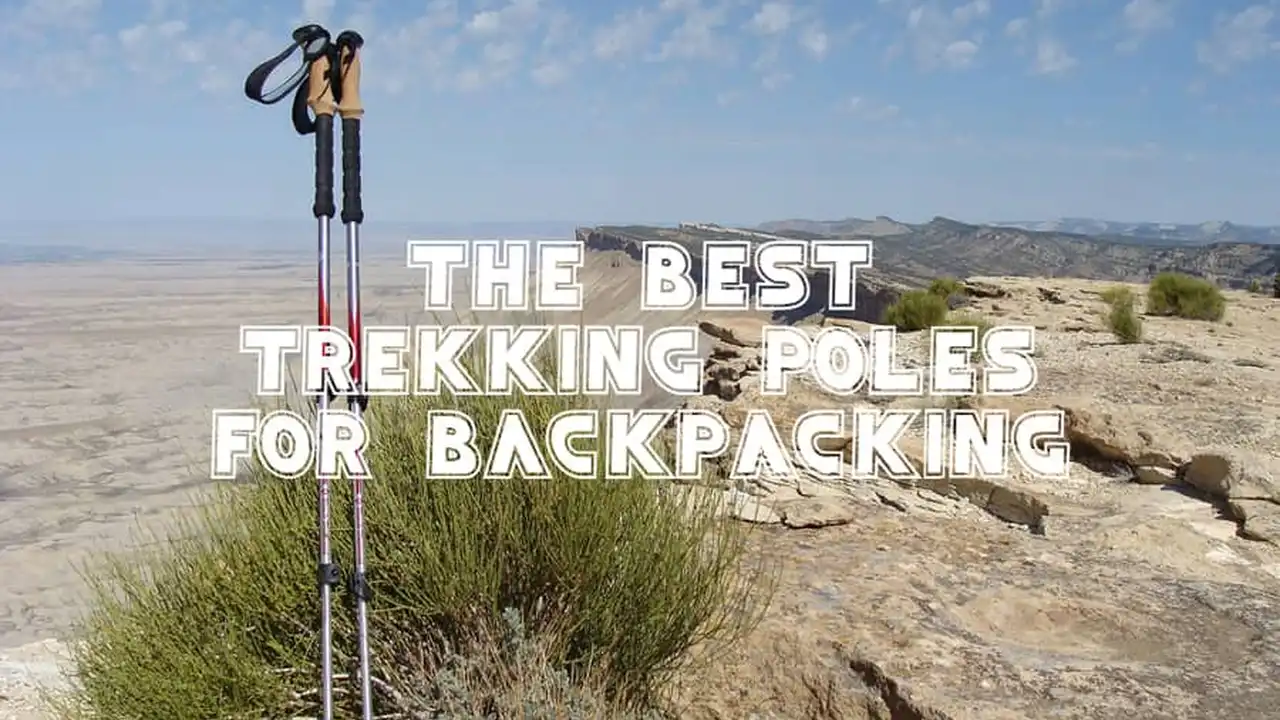Trekking Poles_ Best for Backpacking
Find the best trekking poles for backpacking, considering weight, adjustability, and grip comfort. Improve your balance, reduce strain on your knees, and enhance your hiking experience. Choose the right poles for your needs.

Why Use Trekking Poles for Backpacking Hiking Benefits
So, you're hitting the trails? Awesome! Let’s talk trekking poles. Seriously, these things are game-changers. Ever feel like your knees are screaming on a downhill? Or maybe you're just looking for a little extra stability on uneven terrain? That’s where trekking poles come in. They’re not just for seasoned hikers; they’re for anyone who wants to make their backpacking trips easier and more enjoyable. They help distribute weight, improve balance, and reduce strain on your joints. Trust me, your knees will thank you!
Key Features to Consider Trekking Poles Buying Guide
Okay, so you're sold on the idea of trekking poles. Great! Now, how do you choose the right ones? There are a few key features to consider:
Weight Lightweight Trekking Poles
Weight is a big deal, especially when you're carrying everything on your back. Lighter poles mean less fatigue on long hikes. Look for poles made from carbon fiber or aluminum. Carbon fiber is super lightweight but can be more expensive. Aluminum is a bit heavier but more durable and budget-friendly.
Adjustability Adjustable Trekking Poles
Adjustable poles are a must. You'll want to be able to shorten them on uphill climbs and lengthen them on descents. Look for poles with a reliable locking mechanism. Flick-lock systems are popular because they're easy to use, even with gloves on.
Grip Comfort Ergonomic Trekking Pole Grips
The grip is where your hands will be spending a lot of time, so comfort is key. Cork grips are great because they mold to your hand over time and absorb moisture. Foam grips are another good option, especially for warmer weather. Avoid plastic grips, as they can be uncomfortable and slippery.
Locking Mechanism Reliable Trekking Pole Locks
The locking mechanism is crucial for safety and ease of use. Flick-lock (lever lock) systems are generally considered more reliable and easier to adjust than twist-lock systems. Flick-locks allow for quick adjustments even with gloves on.
Material Carbon Fiber vs Aluminum Trekking Poles
Carbon fiber poles are lighter and absorb more shock, reducing fatigue. However, they're more expensive and can be more fragile. Aluminum poles are more durable and affordable, but they're heavier and transmit more shock.
Tips and Baskets Trekking Pole Tips Baskets
Trekking pole tips come in different materials, such as carbide or rubber. Carbide tips are durable and provide excellent grip on rocks and ice. Rubber tips are better for paved surfaces and protect the environment. Baskets prevent the poles from sinking into soft ground or snow. You'll want smaller baskets for summer hiking and larger baskets for winter use.
Recommended Trekking Poles Product Reviews
Alright, let's get into some specific recommendations. Here are a few trekking poles that I think are fantastic, catering to different needs and budgets:
Black Diamond Trail Ergo Cork Trekking Poles
Price: Around $140
Features: These are my go-to poles. They're super durable, have comfortable cork grips, and feature a reliable flick-lock system. The ergonomic design is great for long hikes, and they're adjustable for different terrains. Perfect for all-around backpacking.
Pros: Durable, comfortable, reliable locking system.
Cons: A bit pricier than other options.
Use Case: Ideal for long-distance backpacking trips on varied terrain.
REI Co-op Traverse Trekking Poles
Price: Around $100
Features: These poles offer great value for the money. They're made from aluminum, so they're durable, and they have a comfortable foam grip. The flick-lock system is easy to use, and they're adjustable for different heights. A solid choice for beginner backpackers.
Pros: Affordable, durable, easy to use.
Cons: Heavier than carbon fiber poles.
Use Case: Great for beginner backpackers and those on a budget.
Leki Micro Vario Carbon Trekking Poles
Price: Around $200
Features: If you're looking for lightweight poles, these are the ones to get. They're made from carbon fiber and feature a unique folding design, making them super compact for travel. The cork grips are comfortable, and the flick-lock system is reliable. Perfect for ultralight backpacking.
Pros: Extremely lightweight, compact, comfortable.
Cons: Expensive, may not be as durable as aluminum poles.
Use Case: Perfect for ultralight backpacking and travelers who need compact gear.
Cascade Mountain Tech Carbon Fiber Quick Lock Trekking Poles
Price: Around $60
Features: These poles are an amazing budget option. They're made from carbon fiber, making them lightweight, and feature a quick-lock system for easy adjustments. The grips are comfortable enough for shorter hikes, and they come with multiple tips for different terrains.
Pros: Very affordable, lightweight, versatile.
Cons: Not as durable as higher-end poles, grips may not be as comfortable for long hikes.
Use Case: Ideal for day hikes and shorter backpacking trips on a budget.
Trekking Poles Comparison Choosing the Right Fit
Let’s break down the differences between these poles to help you decide which ones are right for you:
- Weight: The Leki Micro Vario Carbon poles are the lightest, followed by the Cascade Mountain Tech poles. The Black Diamond Trail Ergo Cork poles are a bit heavier, and the REI Co-op Traverse poles are the heaviest.
- Durability: The REI Co-op Traverse poles are the most durable, followed by the Black Diamond Trail Ergo Cork poles. The Leki Micro Vario Carbon poles are the least durable, and the Cascade Mountain Tech poles are in the middle.
- Comfort: The Black Diamond Trail Ergo Cork and Leki Micro Vario Carbon poles have the most comfortable grips, followed by the REI Co-op Traverse poles. The Cascade Mountain Tech poles have the least comfortable grips.
- Price: The Cascade Mountain Tech poles are the most affordable, followed by the REI Co-op Traverse poles. The Black Diamond Trail Ergo Cork poles are more expensive, and the Leki Micro Vario Carbon poles are the most expensive.
Trekking Poles Usage Tips Hiking Techniques
Okay, you've got your poles. Now, how do you actually use them? Here are a few tips:
- Adjust the Length: On flat ground, your elbows should be bent at a 90-degree angle when holding the poles. Shorten them on uphill climbs and lengthen them on descents.
- Use the Straps: Put your hand up through the bottom of the strap and then grip the pole. This helps transfer weight to the pole and reduces strain on your wrists.
- Coordinate Your Movements: Swing the opposite arm and leg forward at the same time. This helps maintain balance and momentum.
- Plant the Poles Properly: On uphill climbs, plant the poles slightly ahead of you and use them to push yourself up. On descents, plant the poles slightly behind you to slow yourself down.
- Be Mindful of the Environment: Avoid using the poles on fragile vegetation or sensitive areas.
Maintaining Your Trekking Poles Care and Storage
To keep your trekking poles in good condition, follow these tips:
- Clean Them Regularly: Wipe down the poles with a damp cloth after each use to remove dirt and grime.
- Dry Them Thoroughly: After cleaning, dry the poles completely before storing them. This helps prevent rust and corrosion.
- Lubricate the Locking Mechanism: Apply a small amount of lubricant to the locking mechanism to keep it working smoothly.
- Store Them Properly: Store the poles in a dry place, away from direct sunlight.
- Replace Worn Parts: Replace worn tips, baskets, and grips as needed.
:max_bytes(150000):strip_icc()/277019-baked-pork-chops-with-cream-of-mushroom-soup-DDMFS-beauty-4x3-BG-7505-5762b731cf30447d9cbbbbbf387beafa.jpg)






